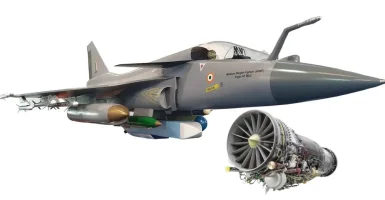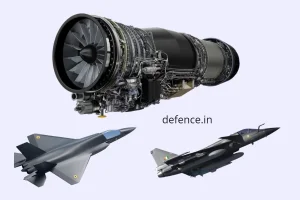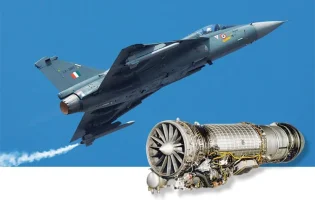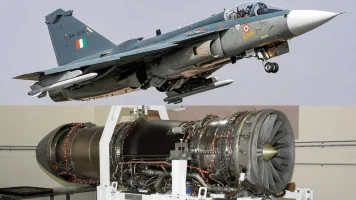- Views: 8K
- Replies: 78

While the Light Combat Aircraft (LCA) Tejas Mk1A program isn't actively seeking a new engine to replace the current GE F-404, potential delays or future considerations might warrant evaluating alternative options.
Two Western engines stand out as potential contenders: the EuroJet EJ200 and the Snecma M88. Let's compare them based on key performance metrics crucial for a light combat aircraft.
Performance Showdown
- Thrust-to-Weight Ratio (TWR): The M88 holds a slight advantage with a TWR of 8.40:1 compared to the EJ200's 9.17:1, potentially translating to slightly faster initial acceleration.
- Thrust-to-Drag Ratio (TDR): The EJ200 boasts a superior TDR of 23.13 N/cm2 compared to the M88's 19.42 N/cm2, leading to better fuel efficiency and overall performance.
- Fuel Consumption: The M88-2 emerges as the more fuel-efficient option in both dry thrust and afterburner modes, which could extend operational ranges and reduce costs.
- Bypass Ratio: Both engines have low bypass ratios favoring supercruise capability. However, the EJ200's slightly higher ratio might offer a slight edge in maneuverability at lower speeds.
- Maintainability: The EJ200 excels with fewer compressor stages and a modular design, promising easier and potentially cheaper maintenance.
- Infrared Signature: While the EJ200 has a slightly lower inlet temperature, the M88 incorporates additional cooling channels and nozzle designs to minimize its IR signature, potentially offering a tactical advantage by reducing detection.
Wet Thrust Comparison
- The EJ200 offers a wet thrust of 90kN, surpassing the GE F404's 84kN.
- The M88's wet thrust of 75kN falls short of both the GE F404 and even the older F-404 engines used in earlier prototypes, generating 78kN.
Choosing the Right Fit
The ideal choice hinges on priorities. The EJ200 excels in peak fuel efficiency, maintainability, higher thrust-to-drag ratio, and a superior thrust-to-weight ratio. The M88-2 shines with its potentially lower IR signature and decent fuel efficiency.Ultimately, if fuel efficiency and a reduced IR signature are paramount, the M88-2 remains a strong contender. However, if the focus is on enhanced thrust-to-drag and thrust-to-weight ratios, coupled with ease of maintenance and reliability, the EJ200 emerges as the clear frontrunner.




